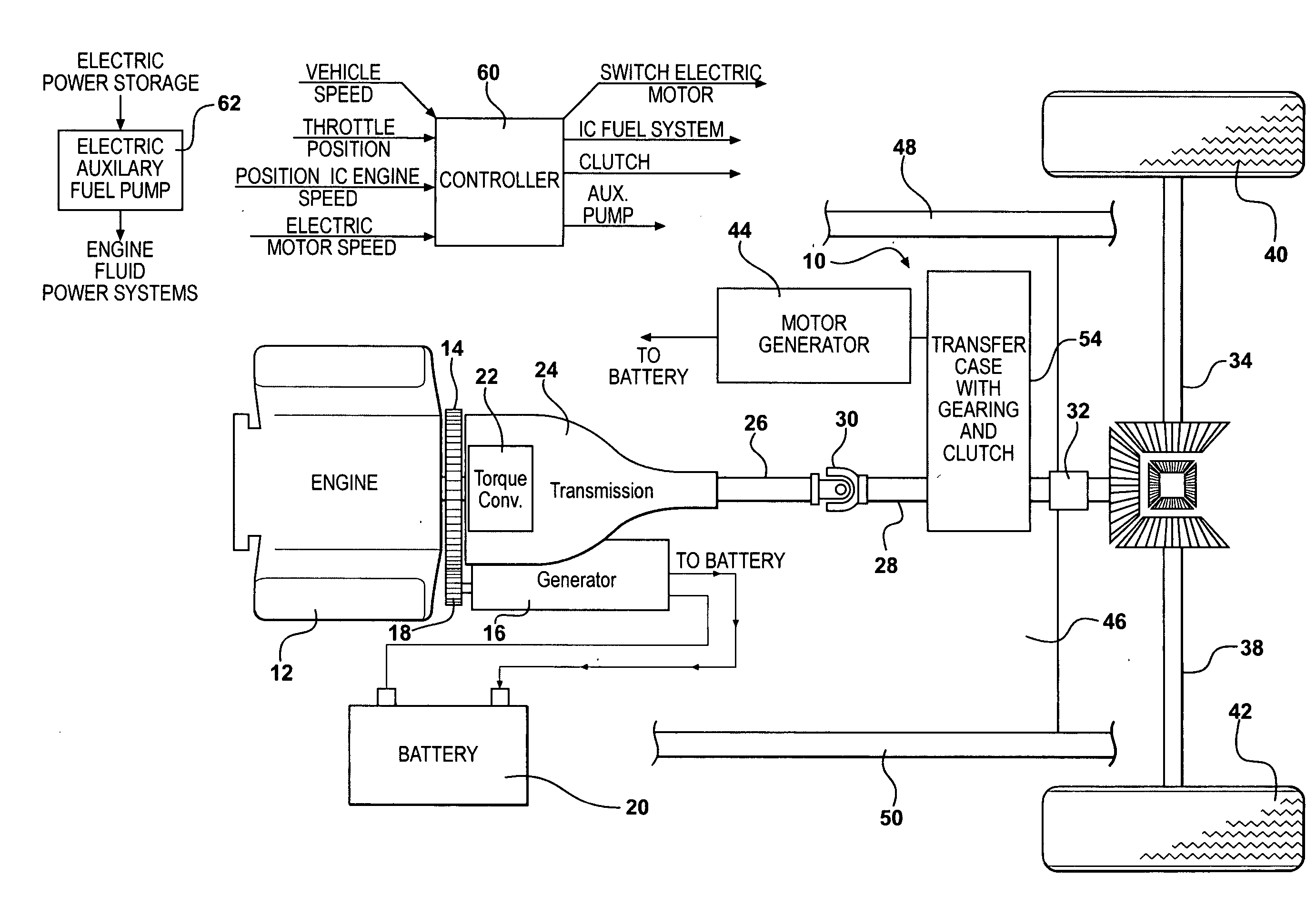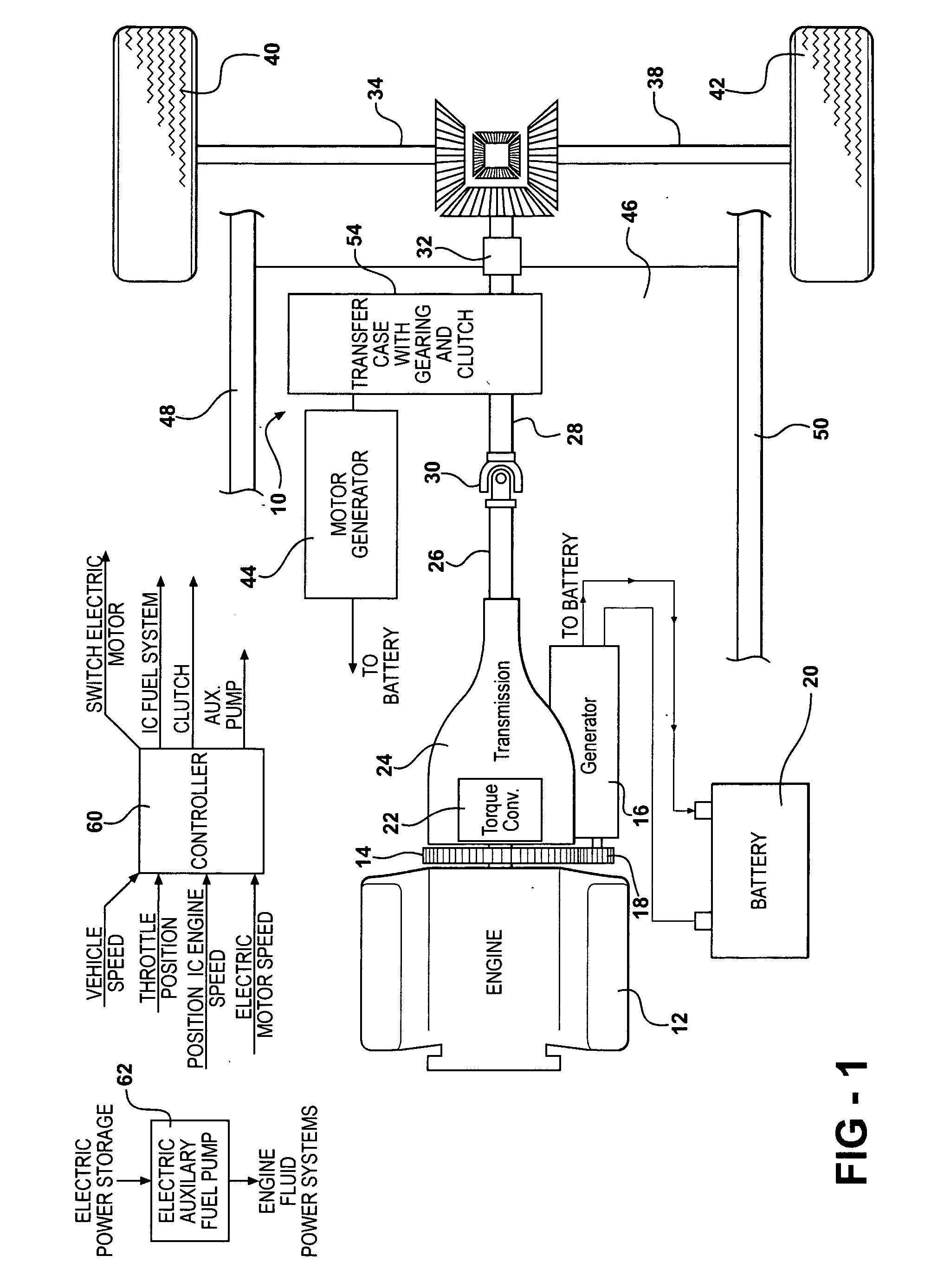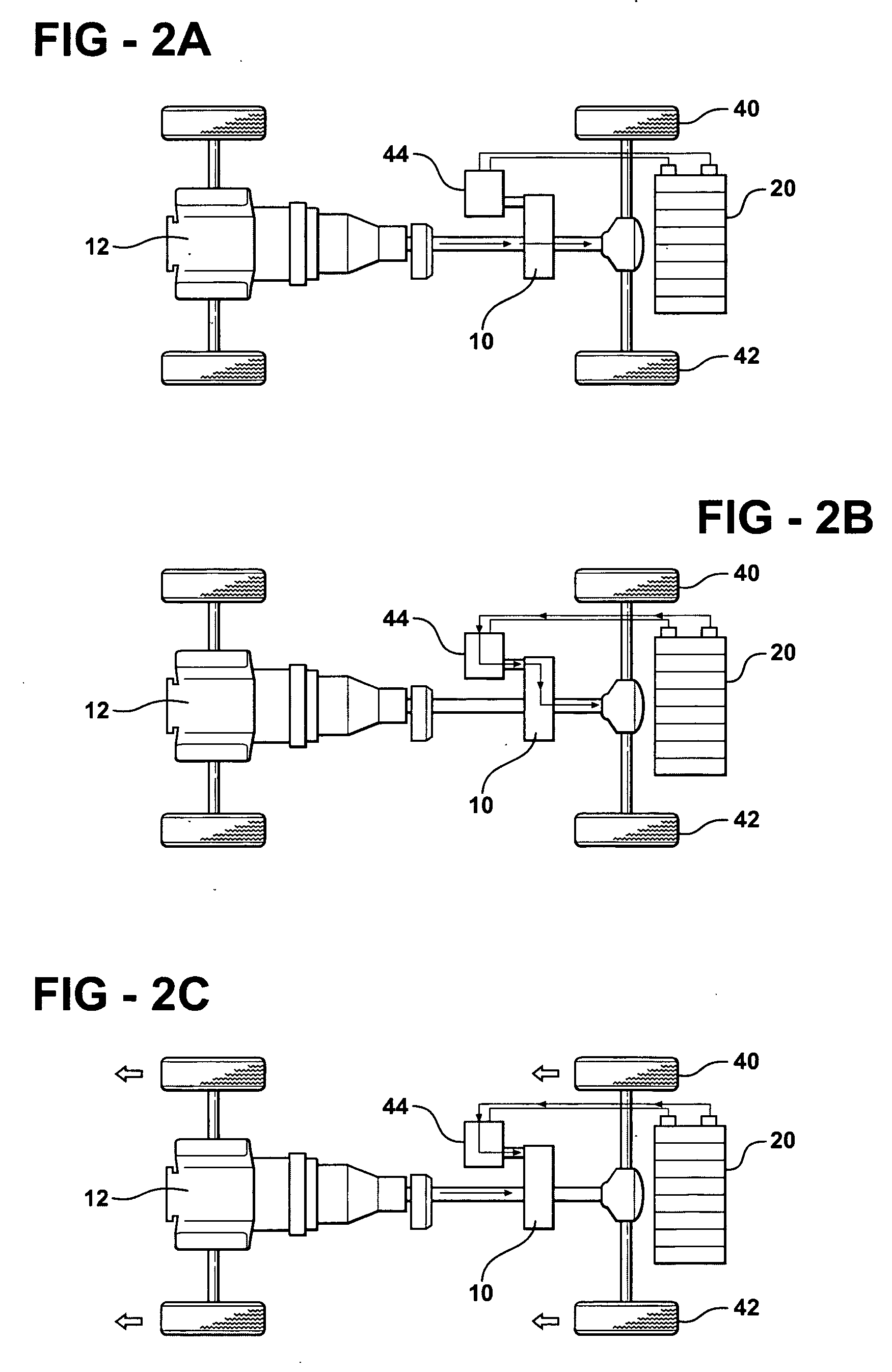Hybrid vehicle formed by converting a conventional IC engine powered vehicle and method of such conversion
a hybrid vehicle and engine technology, applied in the field of hybrid vehicles, can solve the problems of economic irresponsibility, simple junking or retirement of otherwise serviceable vehicles, and inefficient internal combustion engines in high acceleration modes, so as to reduce undesirable emissions, improve fuel economy, and increase the air flow of engines
- Summary
- Abstract
- Description
- Claims
- Application Information
AI Technical Summary
Benefits of technology
Problems solved by technology
Method used
Image
Examples
Embodiment Construction
[0026] The present invention is applicable to any wheeled vehicle powered by an internal combustion engine, including automobiles, trucks, tractors for trailers, and the like. The vehicles may either be two-wheel drive or four-wheel drive in which both the forward wheels and the rear wheels are powered. These vehicles employ an internal combustion engine, typically driving through a torque converter and / or a transmission into a drive shaft connected to a differential which drives the two wheels. In the case of a four-wheel drive, a transfer case is typically interposed between the transmission and the drive shaft to power the front wheel differential which powers the front drive axles.
[0027] The method of the present invention broadly involves modifying one of these drive elements of a conventional vehicle by either removing one of the drive train elements and interposing a modified element in the drive train or modifying a drive train element, to allow mechanical connection of an ...
PUM
 Login to View More
Login to View More Abstract
Description
Claims
Application Information
 Login to View More
Login to View More - R&D
- Intellectual Property
- Life Sciences
- Materials
- Tech Scout
- Unparalleled Data Quality
- Higher Quality Content
- 60% Fewer Hallucinations
Browse by: Latest US Patents, China's latest patents, Technical Efficacy Thesaurus, Application Domain, Technology Topic, Popular Technical Reports.
© 2025 PatSnap. All rights reserved.Legal|Privacy policy|Modern Slavery Act Transparency Statement|Sitemap|About US| Contact US: help@patsnap.com



